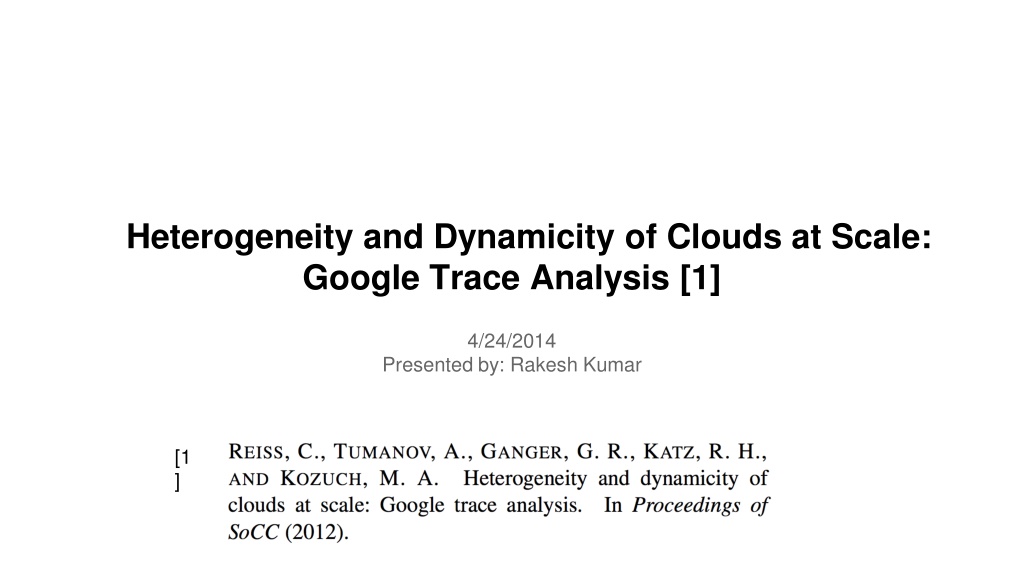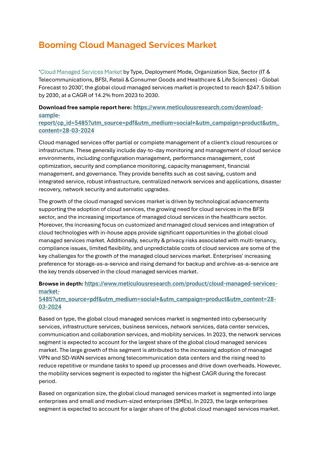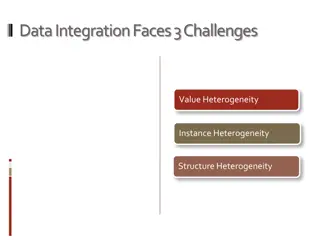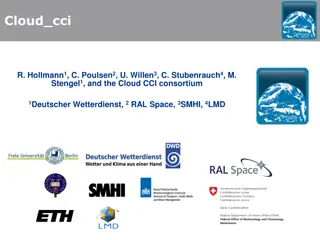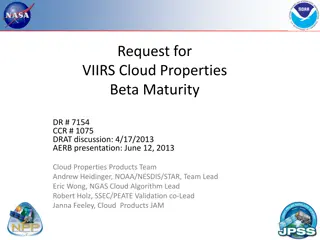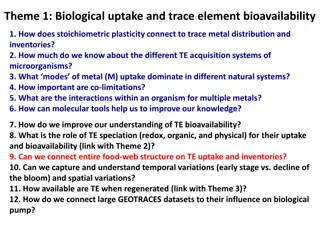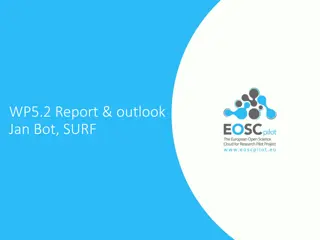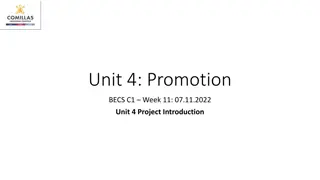Understanding Cloud Heterogeneity and Dynamicity: A Google Trace Analysis
Exploring the heterogeneity and dynamic nature of clouds at scale using Google Trace Analysis, focusing on machine allocation, workload types, job durations, task shapes, and machine churn. The study offers insights into resource allocation in evolving multi-tenant clusters and highlights the challenges posed by varying job priorities, job durations, and resource requests. It also delves into the impact of machine churn on availability and scheduler efficiency.
Download Presentation

Please find below an Image/Link to download the presentation.
The content on the website is provided AS IS for your information and personal use only. It may not be sold, licensed, or shared on other websites without obtaining consent from the author. Download presentation by click this link. If you encounter any issues during the download, it is possible that the publisher has removed the file from their server.
E N D
Presentation Transcript
Heterogeneity and Dynamicity of Clouds at Scale: Google Trace Analysis [1] 4/24/2014 Presented by: Rakesh Kumar [1 ]
Google Trace Available Online: https://code.google.com/p/googleclusterdata/wiki/ClusterData2011_1 o Contains: Obfuscated IDs for jobs, usernames, machine platforms and configuration o One month activity in a12K machine cluster o O(100,000) jobs, O(1) to O(10,000) tasks per job o Task resource requested: (RAM, CPU) and constraints and actual usage every five minutes o Timestamps for task events (Submission, Machine Assignment, Schedule) o Does not contain: Precise purpose of tasks and machine configuration o
Heterogeneity - Machines Machine are heterogeneous and lead to scale up with time hypothesis. Design question: How to allocate units of resources to jobs/tasks in evolving, multi- tenant clusters?
Heterogeneity - Workload types Jobs are labeled using twelve distinct priorities 0 11 and scheduling class. Some jobs are never evicted due to over-allocation (determined using some other attribute, not priority). Production priority jobs form 7% of all jobs.
Heterogeneity - Job Durations Production priority forms a majority of long running jobs. Scheduling classes evenly distributed across short and long run jobs. Design Question: Job duration is heavy tailed, even when sliced by priority or scheduling class, but fails to pass fitness test for power- law distributions. Given that, what assumptions should be made about distribution?
Heterogeneity - Task Shapes Resources request per task for both CPU and memory have wide variations. The CPU and memory request per task has little correlation (R2= 0.14) and CPU : Memory ratio spans two orders of magnitude
Dynamicity Machine Churn Spread: 40% of the all machines are unavailable to the scheduler at once during the 30 day trace. Period: 9.7 losses of availability per machine per year Availability: Over 95% of time, 99% machines are available.
Dynamicity Submissions and Resubmissions 100s of task placement decisions per second, driven by short-duration tasks and resubmission. 14M, 4.5M and 4.1M resubmissions events caused by failed tasks, evictions due machine configuration changes or priority and job kills respectively. 10M resubmissions in three crash looping jobs causing spikes.
Dynamicity Small Jobs 75% of jobs consists of one task, Embarrassingly parallel programs? 50% of jobs run for less than 3 minutes Job submissions are clustered suggesting jobs being part of same larger program.
Dynamicity Evictions Causes: Machine configuration changes and priority. Failure Rate for low priority jobs: 1 task every 15 minutes. Evictions within half a second of scheduling of another task of same or higher probability.
Usage Overview On average, only 50% of the memory and 60% of CPU is utilized, while much larger share is requested in jobs. Can we do better?
Resource Request Accuracy Using 99thpercentile usage for memory and CPU as maximum. The maximum task usage is then weighted by product of per-task resource request and number of days on which task is run to determine requests are usually too high or too low . Users seemingly predict maximum memory consumption better than maximum CPU usage. Design question: Should scheduler trust user input at all?
Usage Stability Machine utilization is predictable over timescales of minutes. Design question: Can scheduling scheme utilize this fact and that tasks last multiple minutes to design predictive scheduling?
Task Constraints - I Hard vs Soft constraints 6% of tasks have hard constraints in the trace: Resource attribute based and anti-affinity constraints. Constraint key o/ seems to mean avoid machine with a certain attribute
Task Constraints - II Anti-affinity constraints cause scheduling delay.
Discussion Question the context: How much is the trace data result of the deployed scheduler and how much is it a function of natural task demands? Waster Work: Evictions appear speculative and not driven by resource monitoring and in some cases unnecessary. Can we do better? How to measure: 99thpercentile sample for estimating maximum usage by a task may not be accurate. How would you measure the resource usage by a given task? Whacky Notions: Think flexible tasks: Can a compute framework be designed which always trades-off memory and CPU resource? So, the scheduler is then able to adapt tasks to what resources are available instead of other way around.
